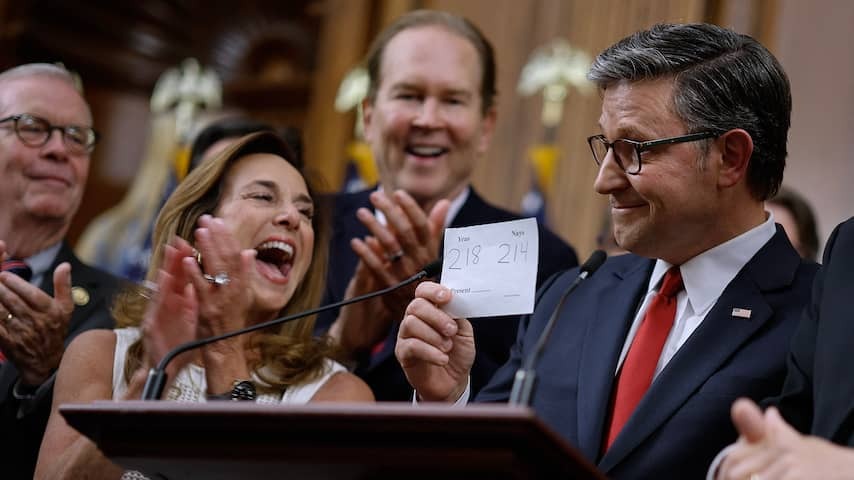
The US House of Representatives on Thursday approved the ‘big beautiful bill‘, President Donald Trump’s large spending bill, after hours of voting.
The bill had already been approved by the House, the US House of Representatives. The bill then also survived a vote in the Senate (the US Senate), but with a number of amendments. As a result, the House had to consider it again.
With a majority in the House of Representatives, that would normally be a formality. But a number of Republican members opposed the amended bill, partly because analysts say the national debt will eventually rise by $3.3 trillion (converted to around 2.8 trillion euros). The debt currently exceeds $36 trillion.
That caused an hours-long impasse. Speaker Mike Johnson did everything he could to get the bill through parliament. He stretched a procedural vote, which normally takes a few minutes, to more than seven hours. This broke the record for the longest vote ever.
In the meantime, hard work was being done behind the scenes to get the Republican faction on the same page. That succeeded in the night from Wednesday to Thursday (American time) in the early hours. Shortly after midnight it became clear that the bill had enough support, a sign that the Republican resisters had changed their minds.
Only then did the substantive consideration of the bill begin. After hours of deliberation, the bill was passed by 218 votes to 214, writes BBC News. Only two Republicans voted against the proposal. In addition, all members of the Democratic Party voted against it. Trump will sign the bill on Friday.
Consequences of legislation will only be noticeable years later
The bill is considered President Trump’s showpiece. Although he can go his own way undisturbed in foreign policy, he needs the support of Congress for domestic legislation. The ‘big beautiful bill’ is his first major package of legislation with a number of radical policy changes.
The package includes a substantial tax cut and tightening of immigration policy. Critics point out that not only will the national debt rise rapidly, but also the poorest Americans will pay for the costs.
The plan includes cuts in food stamps and healthcare for people with low incomes. According to the analysts, the poorest 10 percent will be worse off, while the richest 10 percent will actually benefit.
In practice, it will take years before all parts of the ‘big beautiful bill’ are implemented. Due to the size of the package and the sluggish American bureaucracy, most of the effects will only be noticeable years later.